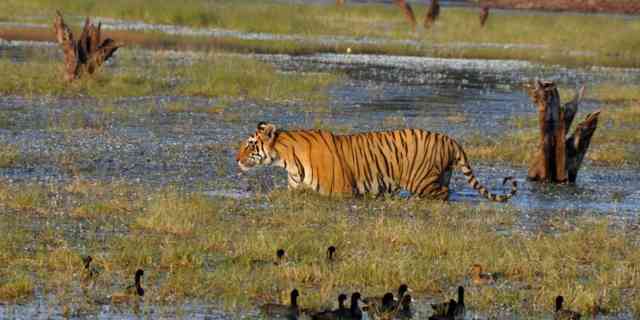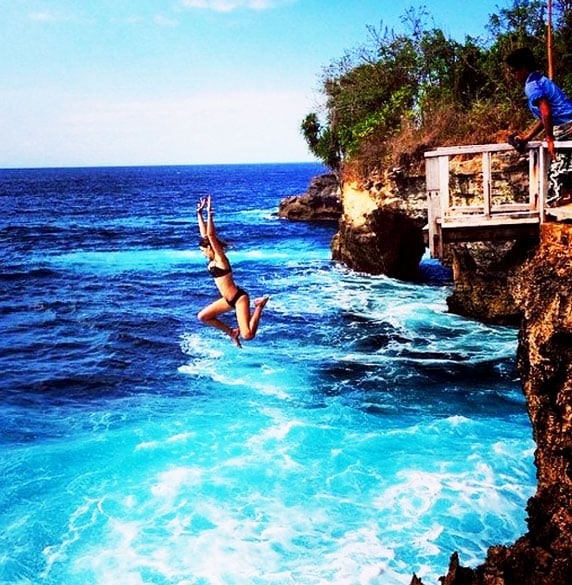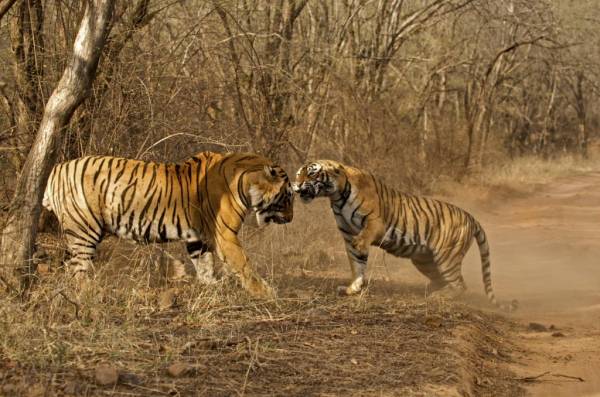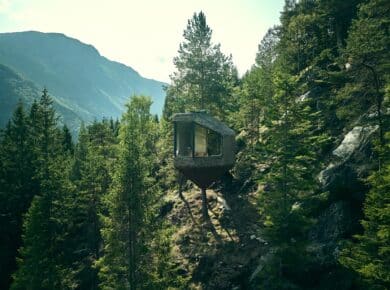It also has huge diversity of flora and fauna. The best part of this national park is that the Vindhya Mountain ruins into the Aravalli mountain ranges. On the South, it is covered by Chambal River and River Banas from the north. This national park is full of dry and deciduous forest, rocky hills, rivers, lakes and lush green meadows.
Unlike camel safari in the desert of Bikaner and Jaisalmer, Ranthambore is truly a tourist delight. The wild haven was a hunting ground during the Rajputana rule for the royal families. Also known as Sawai Madhopur sanctuary, the park was founded in 1955. It preserves the ruins of 1000 years old palaces and fort till date, which reflects a unique touch of royalty.
Ranthambore Tiger Reserve
Located in Sawai Madhopur region, Ranthambore plays a vital role to conserve the tigers. It was announced as Project Tiger reserve in 1973 and later declared as national park in 1980. Spread over 392 sq. km, the national park along with nearest forest region and Kaila Devi Wildlife Sanctuary is covered in Ranthambore Tiger reserve in 1984. Currently, it is one of the best examples of conservation efforts of Project Tiger.
Ranthambore national park houses dry and tropical deciduous forest which is best suited for tigers. Over time, villages were shifted to other areas due to the increasing demand of core areas. The tiger reserve consists of 23 villages. You can visit these villages while visiting the park.
Jeep Safari in National Park
Tigers in the national park are comfortable to human influence. They roam freely around the park. You can get the exclusive view of tigers at the Ranthambore fort which was built in 10th century. You can encounter the wildlife through canter or jeep safari.
Tourist Attractions in Ranthambore
Along with tigers, Ranthambore also houses 30 mammal species, 200 bird species, and 12 reptile species. Some of the widely available species of mammals are wild cats, leopard, wild boar, sambar, sloth bear etc. It is truly a bird watcher's paradise as you can easily click the amazing shots of lesser spotted eagle, crested serpent eagle, collared scops owl, Eurasian eagle owl, peacock, and large grey babbler. Have a quick walk at the waterside areas to get the glimpse of black headed ibis, darter, stork-billed kingfisher, and marsh crocodile.
The best time to visit national park is from October to June. Safari rides are regulated properly in the park and private vehicles are not allowed in the national park. You have to reserve the safari ride in advance with Forest Department. There are fair chances to spot tigers in the national park, if you plan at least 2 to 3 safaris. Even the ride through the park can give amazing experience with its scenic natural beauty.










